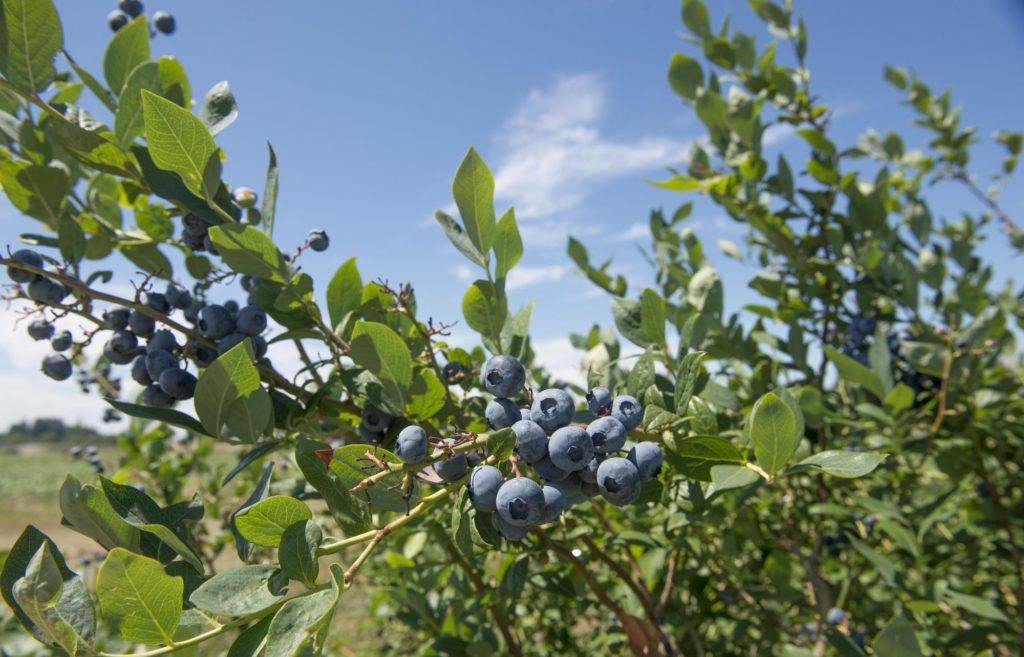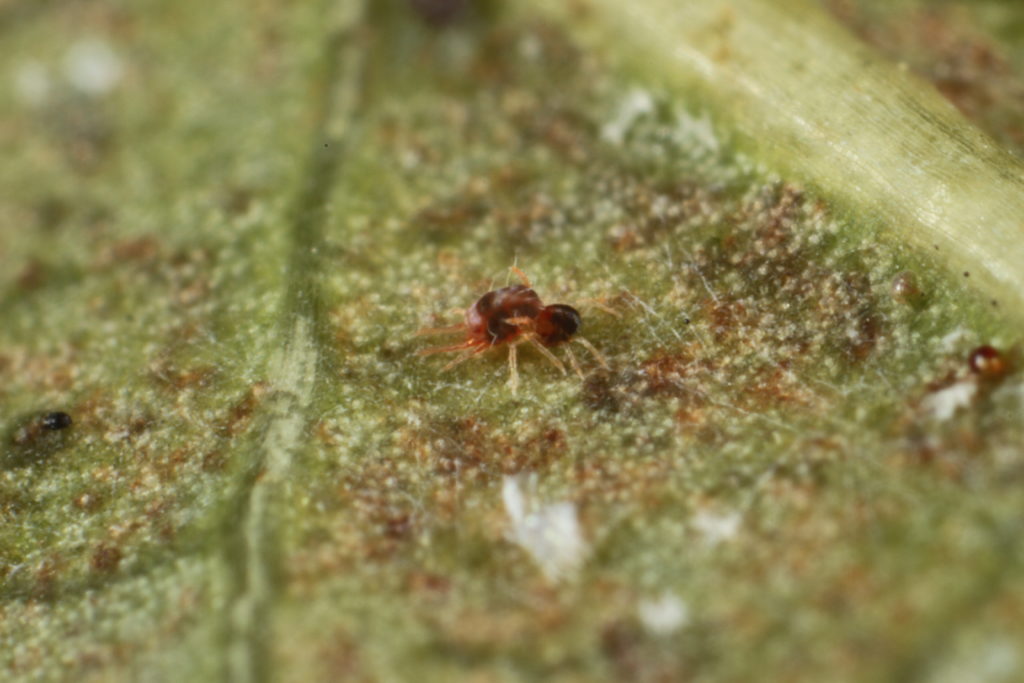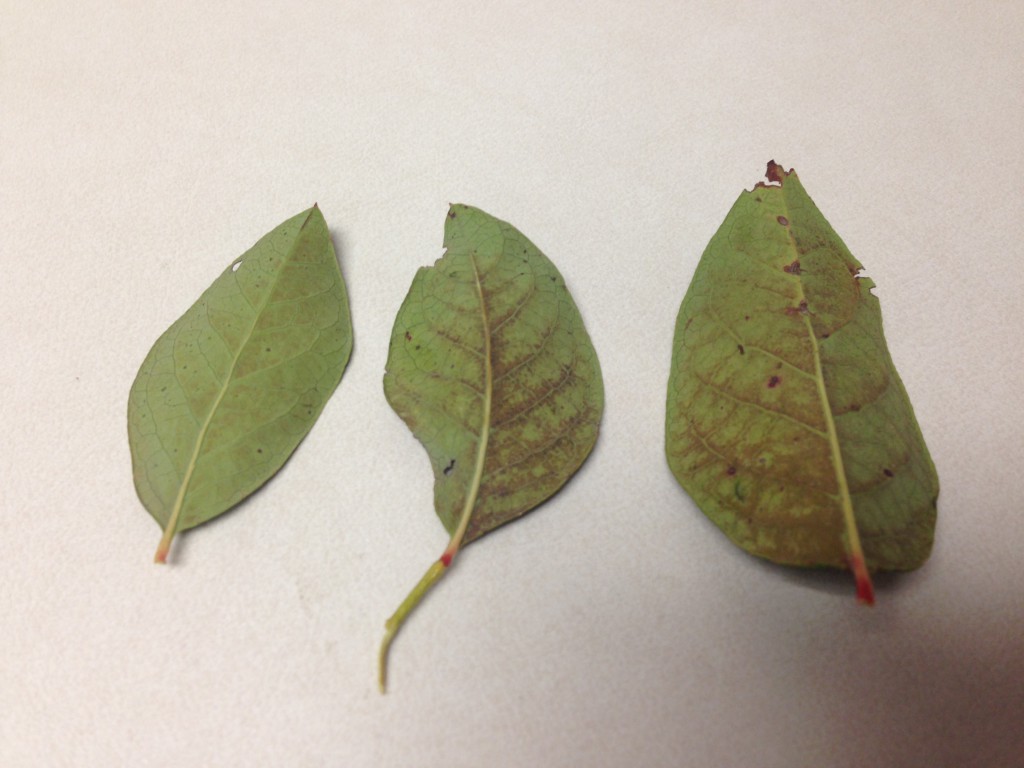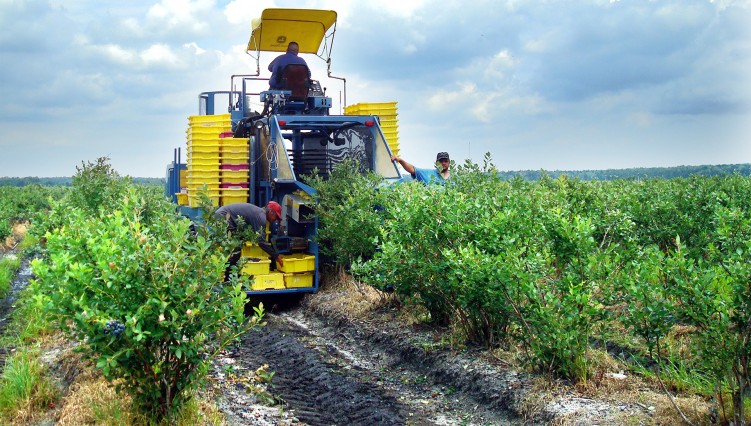Registration of acequinocyl gives blueberry growers a fast-acting miticide with a different mode of action making it a good rotation tool for resistance management.

The United States is the world’s largest commercial producer of blueberries. Blueberries are commercially produced in 38 states with 10 states accounting for more than 98 percent of the U.S. production. The top five states in acres harvested are Georgia, Michigan, Oregon, Washington and New Jersey.
USDA reports the total utilized production of blueberries in 2019 was 673 million pounds, up 21 percent from 2018. For 2019, area harvested was estimated at 102,700 acres, an increase of 15 percent from the previous year. The average yield in 2019 was 6,630 pounds per acre. Crop value totaled $909 million, up 14 percent from the previous season, with an average annual price of $1.35 per pound.
Michigan is one of the top producers of cultivated blueberries. John Wise, professor of entomology at Michigan State University and director of the IR-4 Project North Central Region, said Michigan has been a major producer of blueberries for over 30 years.
“Michigan blueberry growers are very supportive of the role IR-4 plays in bringing pest and disease control tools to the growers’ toolbox,” Wise said. “My participation in bringing these control tools to the growers is being engaged with applied researchers and commodity leaders from around the country who contribute to IR-4 by discussing and determining what products will be useful for various specialty crops.”

Focused on spider mite control
Preceding the 2015 IR-4 Food Use Workshop Wise talked with a group of people involved in the blueberry industry about pest control issues.
“A number of questions came up about products that would be effective on spider mite on blueberry,” Wise said. “Spider mites are primarily a problem in the southern and western U.S. and not so much a problem in the Midwest. The concern expressed by the growers was the availability of control products that would be fast acting.”
Wise said the hot, dry climates found in western and southern regions of the country favor spider mite reproduction. Favorable temperatures and food supplies can enable a generation to be completed in less than a week.
“In the Southern U.S., I have been told there are blueberry nurseries that have a particular problem because of the hoop houses the plants are grown in or other conditions that favor spider mites,” he said.
Blueberry growers from both the South and West expressed interest in finding a fast, effective miticide for use on blueberry. Dave Trinka, vice president of agri-research and horticultural services for MBG Marketing in Grand Junction, Mich., also expressed interest in registering additional miticides. Trinka is a member of the IR-4 commodity liaison committee focusing on blueberry pest control needs.

Adding acequinocyl to the toolbox
Wise said one of the most important reasons for registering the miticide acequinocyl for use on blueberry is its unique performance attributes.
“Acequinocyl offers quick control activity and also represents a different IRAC (Insecticide Resistance Action Committee) classification or mode of action which means it’s a good rotation tool for resistance management,” he said. “Because spider mites are so widespread across many different fruit crops, IR-4 was able to bridge efficacy data from stone fruits and many other crops without needing to rely solely on blueberry performance data. I submitted and contributed my experience with this product from stone fruits which IR-4 used to register acequinocyl on cherries.”
Wise did both efficacy and residue studies with the efficacy data coming from his performance work with cherries.
“Regarding the residue data, even if Michigan blueberry growers don’t find a need to use acequinocyl, the wisdom was to obtain a national label which then requires a distribution of residue trials that reflects the acreage of blueberries planted across the United States.
“We conducted good laboratory practices (GLP) field trials here in Michigan. And there were other researchers in the West and South who also conducted residue trials. When IR-4 makes a request EPA requires that researchers work with the registrant to conduct GLP trials. There is going to be a certain number of trials and a certain distribution based on how the crop is grown across the country.”

Developing an effective IPM program
There are other miticides registered for use on blueberries. Some of these miticides have been available for several years and were also registered through the action of IR-4.
“The good thing about acequinocyl is that it represents a mode of action that is different than these other registered miticides,” Wise said. “Therefore acequinocyl becomes an excellent rotation partner for resistance management and really optimal IPM.”
Even with its unique mode of action, Wise said there is always the concern of resistance development.
“Pests are often capable of developing resistance over time if the management of the pest doesn’t follow IPM principles,” he said. “There is more than one factor that drives resistance. The factors of longer duration of the season and hotter temperatures are going to ultimately result in more generations of spider mites. From that regard, one would expect there would be greater risk of resistance in the South and the West. But there are other factors that impact resistance development.”
Wise said besides rotation of products that limit resistance development, the other big IPM tool growers can use to manage spider mites is to select pest management practices that are as soft on beneficials as possible.
“When selecting insecticides for a wide range of pests throughout the season, choosing products that have the least negative impact on mite predators will have a big impact on their populations,” he said. “Mites in general are the easiest to harness biological control of the many pests that growers encounter and these natural predators can really work.
“For most of the United States predaceous mites are native and present unless growers are taking actions within an orchard or field that deter the growth of the predator population. In most cases, just making good choices in soft tools whenever possible is the best thing growers can do to enhance biological control. These can also reduce the need to make miticide applications unless necessary.”
For more: John Wise, Michigan State University, Center for Integrated Plant Systems, East Lansing, MI 48824; wisejohn@msu.edu.
PR# 11867 Blueberry (Two-spotted spider mite, Broad mite, Southern red mite)
David Kuack is a freelance technical writer in Fort Worth, Texas; dkuack@gmail.com.
